Lockheed Martin and BAE Systems have announced a strategic partnership to co-develop a new family of uncrewed air systems, bringing together two of the defence sector’s most advanced research divisions: Skunk Works and FalconWorks.
The collaboration will focus on a rapidly deployable, modular design that can deliver a range of disruptive effects, including electronic warfare and strike missions. The companies say the system will be cost-effective and adaptable, with options for air drop, ground launch, maritime launch and deployment from wide-body logistic aircraft.
OJ Sanchez, Vice President and General Manager at Lockheed Martin Skunk Works, said: “We’re pleased to join forces with BAE Systems, combining our expertise in rapid prototyping and advanced development to deliver game-changing capabilities. By working together, we’re unlocking new possibilities for our customers and advancing the future of autonomous systems.”
Dave Holmes, Managing Director of FalconWorks, framed the effort as a response to shifting operational needs. “Through our collaboration with Lockheed we’ll deliver disruptive capabilities that can make a real difference to our military customers at pace, enabling them to confront the operational requirements of today’s battlefield.”
The system will be designed to complement existing frontline aircraft, increasing survivability while providing affordable “combat mass” at a time when many armed forces are moving toward mixed fleets of crewed and uncrewed platforms. Both firms emphasised that their shared focus on modularity and rapid prototyping will allow the design to evolve quickly for different mission sets.


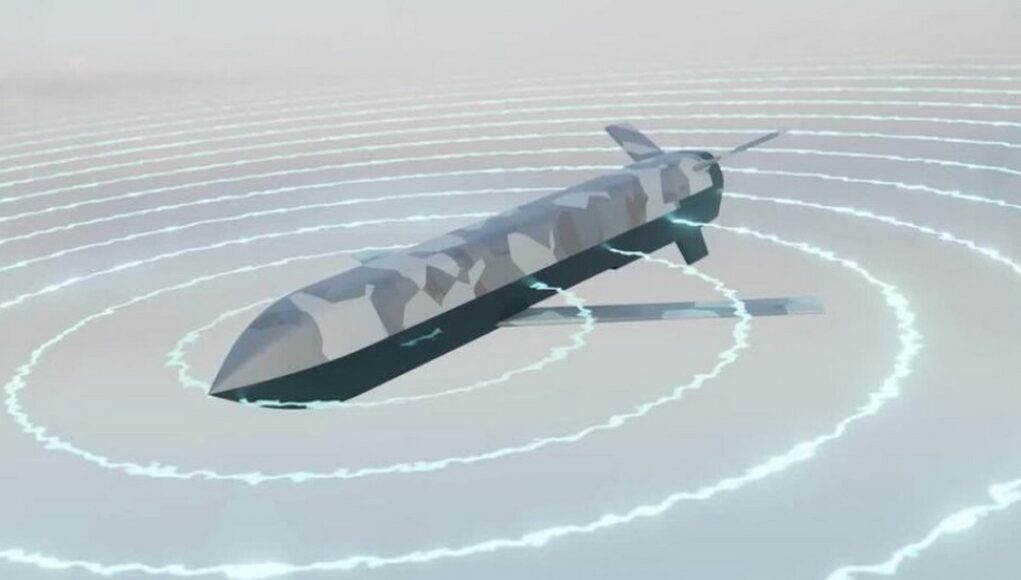
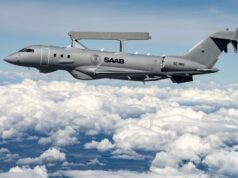
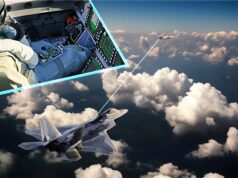
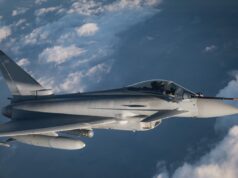
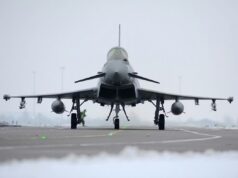
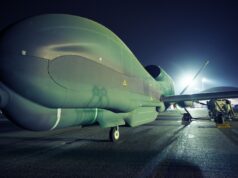

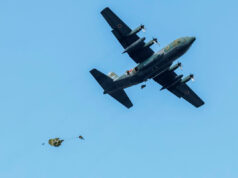


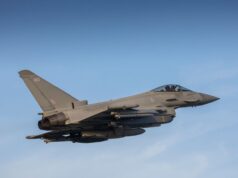

It’s always worth remembering this is BAE Inc so essentially completely firewalled from the UK parent company ( the cost of doing business in the USA).
I thought FalconWorks was in the UK?
Except that FalconWorks is based in the U.K., main site being the Warton in Lancashire: other sites involved include Brough, Filton, Prestwick, Samlesbury, and Towceste.
So no, it’s not ‘BAE Inc’ as you call it.
It’s not BAE inc “ as I call it “ it’s BAE inc in reality and legally. Any US work is always undertaken by BAE inc not BAE PLC . It’s how it works the US requires US ip to be firewall in BAE inc.
US Government funded defence work will have to be done by BAE Systems Inc, by Americans, in America. They would need to apply for explicit permission for this work to be done by BAE Systems Plc, FalconWorks.
But it’s not even relevant here this is a private LM project, not DoD funded.
Hi spock but it still comes under ITAR. If a us company is involved ITAR rules kick in. It’s a profoundly impressive safeguard against any knowledge or tec around military equipment.
That’s the first time someone as called ITAR “profoundly impressive”, if you have ever had to deal with ITAR you will know it cause a huge amount of problems and I worked for BAE Systems PLC at their main site in the UK. It gets really complicated.
Hi Malcom it depends on how you are defining impressive.. it’s impressive in what it is.. a barrier to any US created IP or military product being used in any way outside of US government control. If your talking about co-operation or using said US IP.
It’s a utterly insane bureaucratic barrier
I am no Expert on this subject but I do know that various non US projects do involve IP that has ITAR restrictions it doesn’t mean that foreign companies are by definition cut out of those projects or only their US fire-walled subsidiaries can work on such joint efforts. Equally AUKUS is supposedly about loosening the grip of US ITAR on joint projects and research though under Trump I suspect that is still up for debate or reversing. However the exact nature of this particular collaboration is still one presumes still vague in regard to these implications. Equally though if Falconworks has a British ‘home’ the UK and Bae is hardly likely to shift its own UK IP to America (even its own subsidiary) without some agreement in mutual benefits in exchange. This even happened with F-35 of course and gave us Tier 1 status. Only if this is an agreement between two US based partners where only US research and technology is concerned would it otherwise not have the Bae parent involved. This particular article doesn’t resolve that issue.
Essentially if it’s a US company involved the IP is locked in behind ITAR. It’s fine to collaborate as long as you take into account USA strategic aims.
+ falcon works supports all BAE subsidiaries.. so essentially in this case falcon works will be working as part of BAE inc, unless there is an intergovernmental agreement between the UK and US to share Some of their IPs.
The electronic warfare division in the US is but not Falcon Works that is very UK centric.
Hi Jim it’s more about the fact that any work BAE does for or with the US will come under US IP and essentially get moved to BAE inc. it means that if the Uk want it or want to sell its bound to ITAR and one of the key sets of learning for European nations is that ITAR is a geostrategic straitjacket.
So it’s no problem BAE doing this, but from a truely sovereign point of view it’s very limiting around anything it produces. And the one most important thing Ukraine has shown is sovereign capability is all.
You’re talking nonsense.
IP is owned by companies who pay for its development, though of course they can sell the IP to another company. Or alternatively a company can be paid to develop IP for a commissioning company.
This is a collaboration between U.S.A and U.K. companies.
Only US Government funded development comes under tight control over what is done where, by whom, what nationals can be involved. Naturally like a company, if the US Government pays for a company to develop IP for it, then it as the client owns the IP.
You can actually look at the BAE HMG IP agreement.. essentially is profoundly bound in, if any work at all can be traced to any government funding throughout the history of any company that has become part of BAE there is an IP lock in…BAE PLC and BAE inc etc cannot just take what they have learnt from all their government work and them create something new with no IP issue it all tracks back.. And ITAR is not even bound to US government IP if it’s on the US munitions list and there is any U.S. company involvement it’s Under ITAR.
Doh, which is why I said government control of IP occurs where government funding is involved. Thanks for finally agreeing with me. 🤦🏻♂️
But in this project, there isn’t.
Spock there are may levels of control
Government IP Does not end at one project. If you launch a private project that uses any data, tec or knowledge from that government funded project the government still has an interest and say in that IP.
But the US goes beyond that in that any and all IP that comes under the munitions control legislation is essentially controlled by the US government. So any knowledge related to weapons developed by a US company is essentially US IP ( not government IP, but US IP). That is then protected by ITAR. So if BAE PLC develops a widget in conjunction with any US company including BAE Inc and it then builds that widget in the UK and puts it in a UK build and developed missile that missile is covered by ITAR unless the widget is removed and a completely different widget is designed by a none US company that is not using any proprietary US knowledge or tec… as I have said ITAR and US IP is a solid firewall.
FFS that’s not just the US Government. If you do any new work for anyone else using knowledge gained from doing work for another client then the original client has a say in any new work developed. That’s why all companies involved in this kind of work use strict firewalling between internal teams to prevent such reuse. It’s not difficult to do.
Yes but Spock but if that firewalled team is made up of employees of an American company it’s considered U.S. military IP and it will be covered by ITAR.. there is no wiggle away from that. If you do any business around any military program with any U.S. company private or government sponsored the IP will be covered by ITAR.
Storm shadow is the classic example, its TERCOM system uses US cartography data just using that cartography data in the TERCOM meant the missile was covered under ITAR regulations and the U.S. has been a pain around exporting the missile causing France all sorts of headaches.
ITAR is so comprehensive because the US Munitions list that backstops it is so comprehensive.. cat CXXI includes all articles, defence data and any defence service not otherwise listed… essentially anything the US government wants can be thrown down the ITAR route if there is a sniff of any US company being involved.
And that’s why the Govts have been in long discussions about relaxing some of these restrictions. Britain and Bae is not boi g to give up Uk ip and research for nothing there will be arrangements around and such project to determine these complexities. How reliable it is is another matter.
Are we going to need US permission to fire any weapons that we buy from this collaboration?
Anyone have an idea?
We would need US permission to even buy any of the weapons from the collaboration .. but we could fire them as we wanted once we had them.
Wrong.
ITAR includes the technology and knowledge behind the product not just which county is hammering the metal..you cannot avoid ITAR buy building it outside the USA. If a U.S. company (including any employee or resources of BAE inc) are involved in its development it’s covered by ITAR.
And ITAR doesn’t apply if the technology is developed at FalconWorks – which is quite possibly why LM are doing this, to circumvent the restrictions.
If a US company is involved it comes under ITAR. ITAR is literally designed so it cannot be circumvented.. it’s solid as hell. It’s a profoundly good set of laws.
Can we get some perspective here, a great deal of the weapons we produce has some US and thus ITAR covered content, we also is involved in US weapon systems we buy, but it doesn’t mean we can’t use those weapons without their permission though to sell to third parties would require permission which is why American IP is sometimes removed to free up that option I think ASRAAM was a case in point if my memory is correct. Obviously separate agreements would also be negotiated over any joint development. British IP is clearly not going to be given away for free now that Lend Lease is history so wherever this leads will no doubt have been and will be negotiated in detail. Before we get too obsessed it’s Important to note that Israel used its US jets and weaponry without gaining permission first or as it now transpires even informed the US first. Fact is no one here knows exactly what the precise details of this cooperation is or whether it even has AUKUS like dispensations. There is nuance to be agreed in such matters and Bae is not going to give away its ‘secrets’ for nothing. Falconworks is deeply integrated throughout Bae and of Course prominent in all manner of internal programmes including Tempest it can’t just be sandboxed to work through Bae Inc.
Hi indeed I never said cannot use, once owned it can be used. But the US can block the purchase or production or sale of anything covered by ITAR.
Not if they’re manufactured by BAE in the U.K.
Export controls only apply to weapons built in other countries.
Arguably the reason why LM is partnering with BAE is to have a non-USA based manufacturing partner, as Europe is naturally skittish about depending upon purchasing from the USA at the moment.
My understanding was that if US cartographic data was used/present for targeting then the US could veto any use of the weapon. Or if not present weapons could be launched but would have to rely on GPS+INS
Given the current political hokey-cokey in the US I’d rather not be dependant on a US potential veto.
I’m out of date on many aspects of UK defence though and I’m happy to be corrected.
That’s a separate issue, but yes it equally applies to a UK built weapons, and also applies to usage of GPS too.
I assume the Falcon Works is just a rename of the Business Division, or part of it, that resides at BAES Special Projects Site, located at the SE corner of Warton, away from the main production site.
As part of the Special Relationship it’s been reported back to the 60s that the UK and US have collaborated on advanced aerospace tech.
From early RAM to access to the F117 ans sharing of Stealth tech.
Flying Triangle types have been reported flying from Warton, West Freugh, and other places for years, supposedly in collaboration with DARPA. That is very much in the realms of Ufology, but there is a direct crossover between that and the world of “Black” aviation programs.
Which are of course almost entirely American, with their Black Budget being bigger than our Defence budget.
So this isn’t that surprising?
From what I understand it’s elements and teams from all around the Bae empire and incorporating outside research institutions too as it covers wide ranging technologies and research but all for the first time centrally coordinated and managed, as a project on the scale of Tempest, to which Falconworks and such complex research its central, demands very close coordination and cooperation.
Thanks Spy. Not studied Falcon too closely at all.
From the team that brought you the F35 😀
Neither of these companies know the meaning of low cost. This will be them simply looking for some more of uncle Sam’s sweet honey.
You’re sounding as cynical as me of late!
Why are there different spellings of names and different Space invader thingy’s ? eg Jonatha, you lost your “N”.
It’s got stolen by some young guys in hoodies.
Guys N the hood then